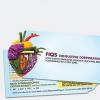Good Afternoon,
I need your help, I just collect food samples from my workplace and results came up today with two deviations.
1. Cooked soup "vegetables soup" with total aerobic mesophilic bacteria count more than 100000.
2. Raw chicken to check supplier products and results was deviation in coagulase positive staphylococci more than 1000.
What is your opinion in the results attached, what might be the root cause for this?
How to avoid happening again?
And is that a huge risk?
Thanks
Hi TahaOsama,
I am curious as to the Official Requirements imposed on your Production. Do the Government ultimately sample/analyse themselves ?
The data in OP appears to represent one sample of each item. (I guess this was your "own" external lab, not an official one ?). Is there an actual Lot of Product ?
The typical sampling/analytical accuracy in microbial data causes any conclusions based on one sample to be highly questionable with respect to the overall lot.
I am not very familiar with GSO Standards but IIRC these are usually nmMc (n=5) based for acceptance/rejection with respect to the deviated organisms under discussion, ie not based on 1 sample.
Regarding the specific numbers reported -
(2) COPS - I agree post 2 that requirement for raw chicken is debatable. (It is also unclear what "raw chicken" actually means ?). Nonetheless the result, if representative of a lot is unusually high, even for a raw material. and could indicate contaminated sample/sanitation/handling problems etc (but also see next sentence). In comparison the result for APC is amazingly low for a raw material and the quoted limit for E.coli (assumed generic) looks more like that for a cooked RTE product (eg compare the 2 quoted limits in the OP), very strange.
(1) APC. The number 170,000 is sufficiently close to the quoted limit that no conclusion is possible IMO due my introductory comments above.
I suggest -
(a) Check the precise requirements in GSO Standard.
(b) Test more samples (eg n=5) which should be representative of the actual Lot involved. (Assuming there is a Lot?)
(c) may be worthwhile to enquire as to the actual methodology used by lab for COPS (IMEX labs may use a variety of methods albeit "based on" official references  ).
).

















